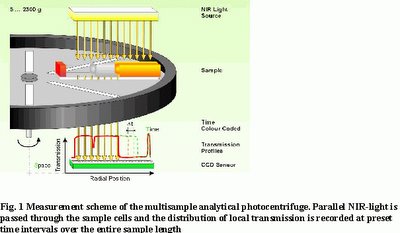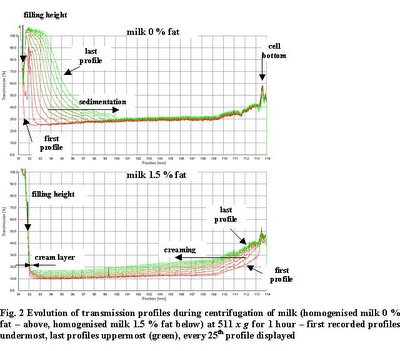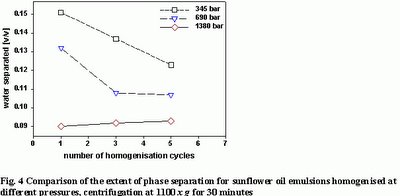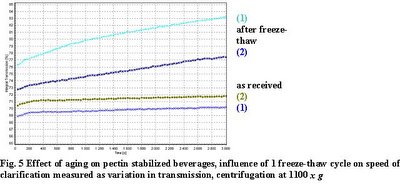ROBIN WOOD-Pressemitteilung
Frankfurt, 10. November 2005
* Redaktion: Wirtschaft / Internationales
Deutsche Bank kooperiert mit Tropenwaldvernichtern in Indonesien
Die Deutsche Bank macht Geschäfte auf Kosten des Regenwaldes in Indonesien. Das hat ROBIN WOOD aufgedeckt. Um dies öffentlich anzuprangern, sind AktivistInnen der Umweltorganisation heute Vormittag auf das Vordach der Deutsche Bank-Zentrale in Frankfurt am Main geklettert und haben dort ein Transparent entrollt. Aufschrift: „Deutsche Bank: Aktienkurs oben, Tropenwald platt!“
Holz- und Zellstoffkonzerne in Indonesien haben in den vergangenen 20 Jahren maßgeblich daran mitgewirkt, zwei Drittel der Waldfläche des Landes zu zerstören. Die Folgen sind dramatisch: Eine besonders artenreiche Tier- und Pflanzenwelt ging verloren. Gewässer wurden verschmutzt, Böden erodierten, klimaschädliche Gase gelangten in die Atmosphäre.
Trotz des fortgeschrittenen Raubbaus will das an der Börse in Singapur notierte Unternehmen United Fiber System (UFS) seine Zellstoffproduktion in Indonesien weiter ausbauen. Zu diesem Zweck plant UFS, das Zellstoffwerk Kiani Kertas in Südkalimantan zu übernehmen sowie dort ein weiteres Zellstoffwerk und eine Hackschnitzelfabrik zu bauen. Die Deutsche Bank koordiniert die Transaktion und hat als „financial advisor“ eine Schlüsselrolle bei dem Geschäft übernommen. Kalimantan, einst das waldreichste Gebiet Indonesiens, ist inzwischen soweit gerodet, dass die dortige Holzindustrie gezwungen ist, Holz zu importieren. Auch das Zellstoffwerk Kiani Kertas, das seit 1997 in Betrieb ist, musste wiederholt die Arbeit unterbrechen, weil nicht genügend Holz geliefert werden konnte.
ROBIN WOOD hat gemeinsam mit den Organisationen Urgewald und Watch Indonesia! am 26.September 2005 die Deutsche Bank mit der Kritik an dem Projekt konfrontiert und um ein Gespräch gebeten. Doch bislang verweigert die Deutsche Bank jegliche Gespräche. Dabei hat sich das Geldinstitut nach eigenen Angaben der Nachhaltigkeit verschrieben und zählt zu den Unterzeichnern der UNEP- Erklärung (United Nations Environment Programme) zu Umwelt und nachhaltiger Entwicklung. Darin verpflichtet sich die Deutsche Bank, regionale, nationale und internationale Umweltauflagen zu erfüllen. Dabei ist es ein offenes Geheimnis, dass in Indonesien bei der Vergabe von Konzessionen zur Umwandlung von Regenwald in Plantagen die Korruption regiert und Gesetze zum Schutz des Waldes missachtet werden.
„Die Deutsche Bank macht sich mitschuldig am Raubbau im Regenwald und weigert sich, öffentlich darüber Rechenschaft abzulegen“, sagt Jule Naundorf, die für ROBIN WOOD recherchiert hat. „Wir appellieren an Kunden und Aktionäre der Bank, ihrem Geldinstitut dafür die Quittung zu geben.“
ROBIN WOOD fordert von der Deutschen Bank, ihre Zusammenarbeit mit UFS als „financial advisor“ nieder zu legen und keine Geschäfte mehr zu unterstützen, die zu Raubbau an den letzten Regenwäldern dieser Erde führen.
Für Rückfragen:
Peter Gerhardt/Jule Naundorf, Tropenwaldreferat, Tel. 0160 / 96 34 72 27, tropenwald@robinwood.de
Ute Bertrand, Pressesprecherin, Tel. 040 / 380 892 22, presse@robinwood.de
http://www.robinwood.de
******************************************************************
Brief von ROBIN WOOD, Urgewald und Watch Indonesia! an die Deutsche Bank vom 26.9.2005
Herrn
Josef Ackermann
Vorstandsvorsitzender der Deutschen Bank AG
Taunusanlage 12
60262 Frankfurt am Main
Fax: 069/910 33982
Engagement der Deutschen Bank als Financial Advisor beim Erwerb von PT Kiana Kertas durch UFS in Indonesien
Sehr geehrter Herr Ackermann,
wir haben zur Kenntnis nehmen müssen, dass die Deutsche Bank als Financial Advisor der United Fiber System (UFS) Ltd. bei der Übernahme des indonesischen Zellstoffkonzerns PT Kiani Kertas auf Ost-Kalimantan benannt worden ist. In einer Pressemitteilung hebt ein hochrangiger Funktionär Ihres Hauses hervor, dadurch die Entwicklung von UFS zu einem wichtigen „key player“ im Zellstoffsektor unterstützen zu wollen, zumal Indonesien in diesem Sektor international sehr wettbewerbsfähig sei.
Diese Verlautbarungen stoßen bei Umwelt- und Menschenrechtsorganisationen weltweit auf großes Unverständnis. Ihre Bank selbst hat in den letzten Jahren zahlreiche negative Erfahrungen mit Zellstoffunternehmen in Indonesien gemacht. Ihnen ist aus eigener Erfahrung bestens bekannt, dass der Zellstoffsektor in Indonesien in hohem Maße durch chaotische Verhältnisse gekennzeichnet ist: Plünderung von Naturressourcen, illegaler Holzeinschlag, Verletzung von Landrechten und Korruption.
U.a. hat die Deutsche Bank in den 90er Jahren in unterschiedlicher Form zahlreiche finanzielle Transaktionen mit APP, dem „schwärzesten Schaf“ in diesem Sektor, getätigt. Keinem der Analysten aus Ihren Haus ist aufgefallen, dass dem Konzern eine nachhaltige Holzversorgung fehlt und er sich zur Deckung seines Holzbedarfes in den umliegenden Regenwäldern bedient hat und dabei selbst vor Holzeinschlag in Naturschutzgebieten nicht zurückschreckte.
Die Deutsche Bank musste im März 2001 an eigenem Leibe erleben, dass ökologische und soziale Risiken sehr schnell zu Kredit- und Haftungsrisiken werden können – APP stellte seine Schuldendienstzahlungen ein, obwohl der Konzern u.a. Ihrem Hause noch ca. 200 Mio. US$ schuldete.
Angesichts dieser – rufschädigenden und ökonomisch bitteren - Erfahrungen mit APP überrascht es umso mehr, dass die Deutsche Bank weiterhin Aktivitäten im Zellstoffbereich in Indonesien unterstützen will. Die strukturellen Probleme dieses Sektors sind weiterhin ungelöst, und viele andere deutsche Banken lehnen aus eben diesem Grund neue finanzielle Engagements in diesem Sektor und mit diesem Land derzeit kategorisch ab.
Wir möchten Sie daher eindringlich davor warnen, die Rolle als „financial advisor“ für den Kauf der Zellstofffabrik PT Kiana Kertas durch UFS auf Kalimantan zu übernehmen. Ganz konkret halten wir das geplante Engagement der Deutschen Bank aus folgenden Gründen für mehr als bedenklich:
1. Die Papier- und Zellstoffindustrie in Indonesien ist durch (legale und illegale) Abholzungen, Brandrodungen, Menschrechtsverletzungen und Landrechtskonflikte eine der Hauptverantwortlichen für die Dezimierung des indonesischen Regenwaldes. Inzwischen gibt es 7 große Zellstoffwerke, mehr als 65 Papierfabriken, und 10 kombinierte Anlagen auf indonesischem Territorium. Um den Rohstoffbedarf dieser Industrie decken zu können, werden jährlich 2,4 Mio. Hektar Wald abgeholzt, der Großteil davon bisher auf der Insel Sumatra. Da dort kaum noch Holz zur Verfügung steht, versucht sie nun, auf Kalimantan auszuweichen und dort weitere Kapazitäten zu schaffen. Selbst die Weltbank geht davon aus, dass Kalimantan in 5 Jahren (2010) keine Tieflandregenwälder mehr haben wird.
2. United Fiber System Ltd. wird neben dem Erwerb des PT Kiani Kertas Werkes zusätzlich ein weiteres Zellstoffwerk in Satui, Süd-Kalimantan, errichten. Dieses Werk soll aus einer Zellstofffabrik und einer Hackschnitzelfabrik bestehen. UFS betont in öffentlichen Stellungnahmen, dass der Holzbedarf ausnahmslos durch Holz aus den nachhaltig bewirtschafteten, firmeneigenen Akazienplantagen stammen wird. Untersuchungen des wissenschaftlich renommierten CIFOR-Institutes in Bogor/Java und des finnischen Consultingunternehmens Jaakko Pöyry haben jedoch ergeben, dass UFS nicht in der Lage sein wird, die benötigte Menge Holz in den ihnen derzeit zur Verfügung stehenden Plantagen zu erzeugen. Daher wird UFS seinen Holzbedarf aus anderen Quellen befriedigen müssen: Entweder müssen Holzhakschnitzel angekauft werden, was die Produktion unrentabler und ökonomisch riskanter macht, oder UFS wird von Holz aus illegalen Quellen abhängig werden.
3. Aktuelle Studien von Global 2000, CIFOR und Watch Indonesia! belegen zudem, dass auch die Rohstoffversorgung von PT Kiani Kertas nicht gesichert ist. Das Problem ist nicht neu. Bereits 1997 – kurz nach der Eröffnung von PT Kiani Kertas - kam es zu Schwierigkeiten bei der Holzversorgung. Die Kapazitäten des Zellstoffwerkes waren von vornherein nicht nachhaltig ausgerichtet. 2003 stockte der Nachschub völlig, und PT Kiani Kertas musste die Produktion für ein halbes Jahr komplett einstellen. Kiani Kertas importierte daraufhin Holzschnitzel aus umliegenden Staaten : Nach offiziellen Angaben aus Australien, den Philippinen und Malaysia - Staaten, die selbst nicht über ausreichend Wald verfügen und, zumindest im Fall Malaysia, vielfach geschmuggeltes Holz aus Indonesien verarbeiten. Darüber hinaus ist dokumentiert, dass für den Bau der Fabrik zwei Dörfer umgesiedelt werden mussten. Bewohner/innen, die sich der Umsiedelung widersetzten, wurden und werden bis heute vom Militär terrorisiert und eingeschüchtert. Außerdem müssen wir aufgrund von Umweltstudien der Universität Mularwarman in Samarinda davon ausgehen, dass PT Kiani Kertas seine Abwässer ungeklärt in die Sulawesi-See eingeleitet hat.
Angesichts der hohen Brisanz und Aktualität dieses Themas halten wir es für dringend geboten, diese Kritikpunkte in einem persönlichen Gespräch mit den zuständigen Sachverständigen aus der Kreditabteilung Ihres Hauses zu erörtern. Wegen des großen öffentlichen Interesses an diesem Geschäft, uns haben schon Medienanfragen in dieser Sache erreicht, bitten wir Sie, uns möglichst umgehend einen Termin in dieser Sache zu gewähren.
Für Rückfragen stehen wir Ihnen gerne jederzeit zur Verfügung.
Mit freundlichen Grüßen
Jule Naundorf Barbara Happe Marianne Klute
Eine Kopie des Briefes geht an:
Herrn Hanns Michael Hölz, Leiter der Umwelt- und Nachhaltigkeitsabteilung der Deutschen Bank AG
 Rund 70.000 Wehrpflichtige eines Jahrgangs werden bei der Musterung „vergessen", weil die Musterungskapazitäten in den Kreiswehrersatzämtern auf unter 370.000 Musterungen pro Jahr begrenzt sind. Außerdem hat die Änderung des Wehrpflichtgesetz im Oktober 2004 den Anteil der Untauglichen verdreifacht, von 12 % im Jahr 2000 auf 36 % im Jahr 2005. Auf diese Weise werden mindestens 110.000 Wehrpflichtige jedes Jahrgangs entweder nicht gemustert oder willkürlich für nicht wehrdienstfähig erklärt.
Rund 70.000 Wehrpflichtige eines Jahrgangs werden bei der Musterung „vergessen", weil die Musterungskapazitäten in den Kreiswehrersatzämtern auf unter 370.000 Musterungen pro Jahr begrenzt sind. Außerdem hat die Änderung des Wehrpflichtgesetz im Oktober 2004 den Anteil der Untauglichen verdreifacht, von 12 % im Jahr 2000 auf 36 % im Jahr 2005. Auf diese Weise werden mindestens 110.000 Wehrpflichtige jedes Jahrgangs entweder nicht gemustert oder willkürlich für nicht wehrdienstfähig erklärt. Von 2005 bis 2010 sollen insgesamt 354.400 Wehrpflichtige zum Wehrdienst einberufen werden. Wenn alle Männer gemustert würden, ständen über eine Million Männer nach den heutigen Musterungs- und Freistellungskriterien für die Einberufung zum Wehrdienst zur Verfügung, rund 650.000 können also trotz Verfügbarkeit bis 2010 nicht einberufen werden.
Von 2005 bis 2010 sollen insgesamt 354.400 Wehrpflichtige zum Wehrdienst einberufen werden. Wenn alle Männer gemustert würden, ständen über eine Million Männer nach den heutigen Musterungs- und Freistellungskriterien für die Einberufung zum Wehrdienst zur Verfügung, rund 650.000 können also trotz Verfügbarkeit bis 2010 nicht einberufen werden. 





